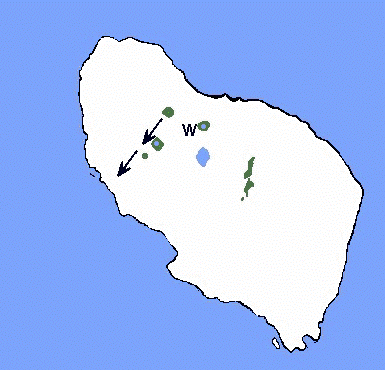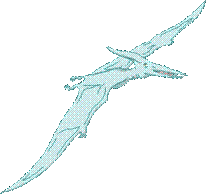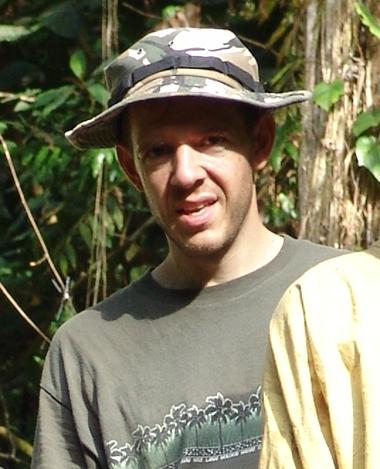


|
Ropen Light Sighting by David Woetzel |


|
The following is an email interview of David Woetzel by Jonathan Whitcomb (early 2005):
“My sighting was so quick that it was impossible to get a video—maybe 2 seconds . . . almost golden and shimmering around the edges. It looked like an old-fashioned street light in the fog.
“There was no tail and it was flying horizontal from Mt. Barik toward Mt. Tolo.”
Question: “Where were you when you had your sighting?”
Answer: “Outside the Arot Village in our observation area”
Q: “What was the background?” (What was behind the light?)
A: “The sky in the Maruramo Village direction” |
|
“I turned around and saw it streaking across the horizon and disappearing behind Mt. Tolo. The size, color and speed made it immediately stand out as unlike any other thing I've ever seen in the sky. As soon as the others returned I told them about it. The very next morning we hiked up Mt. Tolo, but to no avail.” [The ropen was not found]
Photograph Copyright 2004 Garth Guessman |
|
From Mr. Woetzel’s descriptions, Whitcomb estimates the ropen light was about three kilometers from Woetzel when the creature flew behind the mountain peaks that include Mount Tolo. The horizontal path of movement is an important clue: It was no meteor. |
|
The American explorer saw, at about 10 p.m., in October of 2004, what investigators believe was a living pterosaur known on Umboi as “ropen.” |


|
“W” represents Woetzel’s position. The light disappeared behind the group of mountains to the west of Woetzel. This area has three small bodies of fresh water. As there is no similar body of fresh water on the mountain from which the light seemed to come*, the ropen may have stopped for a drink before flying toward the sea coast. Or maybe the creature began a gradual descent at about the point where Woetzel lost sight of it. This would allow the ropen an easy glide path down to the southwest coast. This would contribute to it being below the horizon when it got to a place where it otherwise might have been visible to Woetzel. *(Mount Barik has no lake.)
The point where he saw the light disappear behind the mountain is near Lake Pung, the crater lake where seven boys saw a giant ropen flying in the daytime around 1994. |

|
From when Woetzel first saw the light to when it disappeared behind the mountain in the west was about two seconds. He set up his camcorder, hoping the light would emerge from the other side of the mountain. It did not.
This map of Umboi Island illustrates three explanations for this sighting. After the creature went behind the mountains which includes Mt. Tolo, it may have made a slight course change and headed directly for the nearest sea coast. Another possibility is that it stopped on one of the peaks in this area, perhaps at Lake Pung. A third possibility is that the ropen flew out in the same direction but the increasing distance from Woetzel and the higher elevations in the south kept it hidden.
The most likely reason that Woetzel did not see the ropen light reappear on the other side of the mountains, according to Whitcomb, is that ropen light doesn’t last longer than six seconds. |
|
“Though the sighting was brief, it may be the most significant sighting by a Westerner in many years on this island. This has a high credibility rating from me.” (Jonathan Whitcomb, forensic videographer and living-pterosaur investigator) |
|
The lack of mainstream scientific research into living pterosaurs, in the early 21st Century, seems shocking. Glen Kuban, has tried to discredit the idea that pterosaurs still fly through our skies; he ignores, however, the significance of the weightier eyewitness evidence: long tails, bioluminescence, and fish-eating habits of ropens. Other critics of the idea of living pterosaurs also seem to miss the point of the more credible eyewitness evidence: many credible eyewitnesses (see here). |
|
Brian Hennessy, a professional psychologist, does not suggest that those who see living pterosaurs are crazy: He saw one himself in 1971, on Bougainville Island, Papua New Guinea. His description of the “primitive” flying creature resembles that of Hodgkinson’s “pterodactyl.” Why not believe both the psychologist and the flight instructor? |


